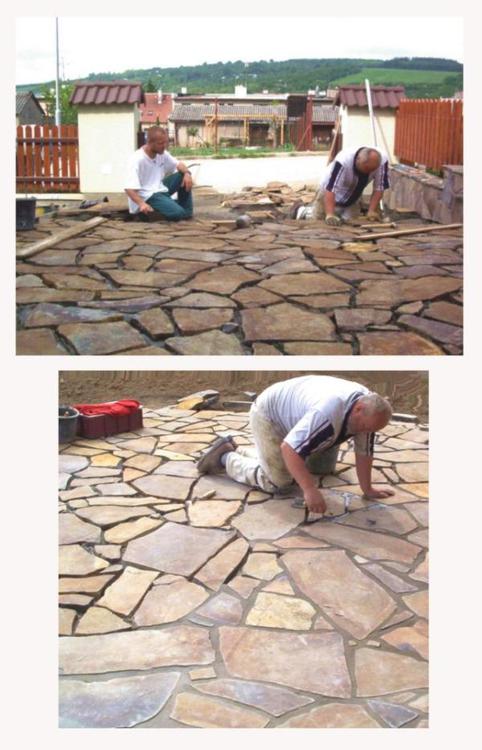Natural stone – natural beauty

Natural stone is an ideal building material especially for its durability and resistance to climate change It offers unlimited variety of colours, shapes, and patterns which were created by minerals when creating rocks.
Decorativeness of natural stone enables its use in an exterior and interior. In combination with other stones or products it has natural and pleasant look.
Our range of stones includes these natural stones such as andesite, sandstone, or slate. A primary type of rock is andesite which emerged in the Tertiary as a volcanic rock. Andesite is suitable for use either in usual or extreme climate conditions. Its physical and mechanical properties such as resilience to frost, firmness in pressure regardless of moisture, and almost zero water absorption determine a durable rock. Stone is adjusted by cleaving. It cleaves into plates of irregular shapes and diameter. It can be divided according to its width and use. Andesite is supplied in three basic colour shades such as grey brown, brown red, and black.
Another type of stone is a sandstone – it is very solid calcite sediment of yellow colour. The sandstone is suitable for all purposes as well as andesite. It is not porous so it does not catch dust and it does not need any special surface treatment even when used in exterior. Range of stones are complemented by slates which are determined for tiling thanks to their lenticular shape.
Unlike other types of stones slates are of unusual green violet and grey blue coloration which enables customers to imagine numerous decorative ideas. River pebbles are suitable for garden owners.
Classification of stones according to their use:
For the purpose of this article we take only above-mentioned stone types into consideration. Facing stone is a stone which contains sharp edges and unevenness on visible surface therefore it is not suitable for paving. Owing to natural unevenness the surface looks three-dimensional which emphasis final impression. Usually, stone of width from 1 – 2 centimetres is used for tiling.
The slate is an exception for it has stone plate width from 3 – 5 centimetres.
Paving is a stone which has at least one visible side without unevenness and edges. For paving the stones are divided into these widths: 1 – 2 centimetres; 2 – 4 centimetres; 4 – 7 centimetres; 7 – 10 centimetres. Width selection is dependent on paved area load and placement method (see the part devoted to the placement method). For stepping areas stone width can be 1 – 4 centimetres but for traversing areas stone width should be 4 – 10 centimetres.
Strip shaped stones are created by natural andesite cleaving into prismatic shapes in lengths circa 10 – 25 centimetres. Its speciality is usability of all four sides as visible ones where each side can provide different colour. It is suitable for creating illusion of stone wall.

Tiling with prismatic shapes evoke an impression that a solid rock is used. In reality it is usual masonry with stone facing. Mop boards of old cottages, mountain cottages, walls or fireplaces serve as a good example.
Step-in stones are selected andesite paving in widths from 2 – 4 centimetres or 4 – 6 centimetres. Surface dimensions of step-in stones in whatever place is at least 30 centimetres.
Source: www.ceskestavby.cz
